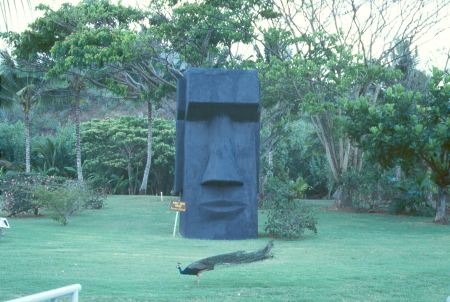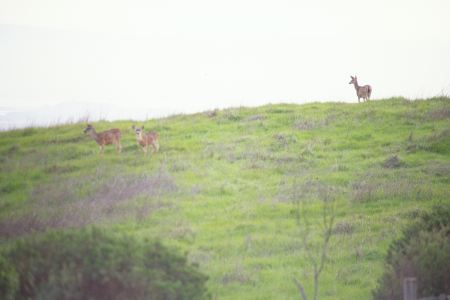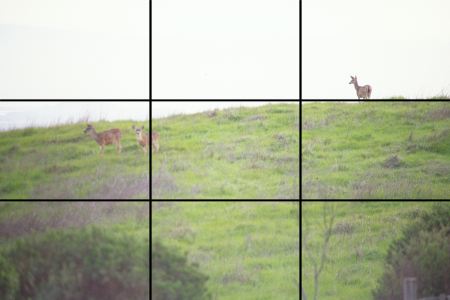Finally, I'm getting to the stuff that you expected to see when you started reading: specific composition suggestions. You didn't realize I was going to harp about the price of film for four pages, did you?
There are many, many elements of composition in photography. This presentation is going to cover just a few of the basics, starting with your subject. More specifically: where you put the subject in the photograph.
Common sense seems to say that the most important part of a photograph -- the subject -- should be right in the middle. Experience shows that strategy generally leads to boring photographs. Remember the stone head?

Boring! If the center isn't the right place for the subject, where should it be? Just about anywhere else.
There's a principle in composition called the Rule of Thirds. (I prefer to think of it as a guideline.) The idea is that you imagine cutting your picture up into thirds, horizontally and vertically. This makes four off-center verticies within the photograph. Putting your subject on one of these four spots is supposedly a good thing. Here's an attempt at an example.

Imagine dividing up the photograph into thirds.

There are three deer, but I was concentrating the one in the upper right as my subject. The other two are just context for my subject. In fact, they're a little fuzzy because I was focusing on my main doe. Note that I tried to put her close the the intersection of the upper and right thirds. (I missed, but you can see that she's not in the dead center.) Precision isn't important with the Rule of Thirds.
[Hey! What happened to getting closer? Unfortunately, this was as close as I could get. I'm against a fence with a long telephoto lens, and my presence was already making the deer skittish. When you can't get closer, placement becomes very important. You can make a small subject much more prominent with careful placement. Remember this next time you try to include the moon or the sun in your picture.]
What I like best about the Rule of Thirds is that it reminds me to try moving the subject away from the center. In fact, I often like to see how far off center I can push it. (Which is why my main doe doesn't really meet at the intersection of the dividing lines.) Do you like this?

Our tiny subject is right at the bottom of the photograph! The plain sky replaces much of the distracting detail, including my failed attempt to include interesting context. This much more dramatic photo is the same deer in the same spot, just a few seconds later. All I did was re-aim the camera. Was that worth another shot of film? I think so.
Warning: Some point-and-shoot autofocus cameras desparately want to focus on whatever is in the center of the picture. These cameras are designed this way because so many people take pictures that way. If you actually try to put your subject to the side, the autofocus will home in on something in the background, and you've got a useless picture. Learn about your camera and figure out if it does this. Learn if it has a way to override the focus. Many of these cameras have a "focus lock" feature. First you put the subject dead center and press the shutter button half way. The camera will focus. Then, without releasing the button, re-aim so the subject is where you want it, and squeeze the button the rest of the way down. It takes practice.
Orientation